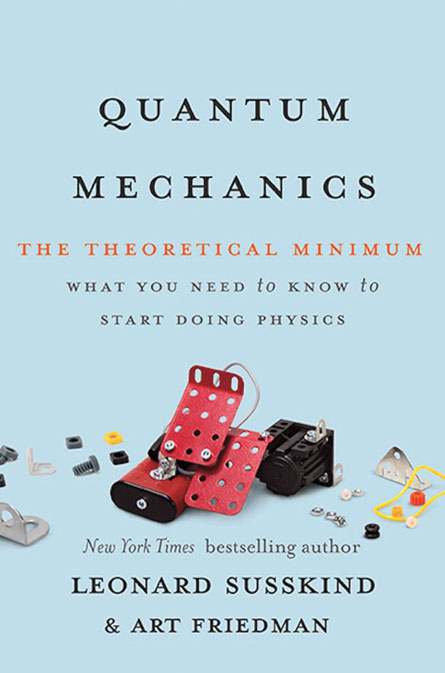The least physics you need is a lot in ‘Quantum Mechanics’
Leonard Susskind and Art Friedman offer the theoretical minimum you need to know to start doing physics
- More than 2 years ago

Quantum Mechanics: The Theoretical Minimum
Leonard Susskind and Art Friedman
Basic Books, $26.99
If you’re ever banished to a desert island and allowed to take just one book, here it is. Given enough time, with no distractions, you could use it to eventually master quantum mechanics.
Susskind’s latest book, this one with coauthor Friedman, is the second in a series on the “theoretical minimum” you’d need to know to actually be able to do physics. The first focused on the basics of classical physics. This one takes you deep into the weird realm of quantum theory.
There’s no popularization here. Just clear, straightforward exposition of basic quantum principles and their mystifying implications. Susskind starts with qubits, the quantum units of information typically associated with the spins of subatomic particles. How such spins are measured, and the mathematical apparatus needed to account for the results of those measurements, form the core of the quantum theoretical toolkit.
Eventually you’ll encounter quantum entanglement, the puzzling connection between some quantum particles that so disturbed Einstein. Further on comes the Heisenberg Uncertainty Principle, which Susskind is able to explain thanks to the preceding foundation, rather than just stating it, as most popular books do. Ultimately the Schrödinger equation itself emerges, the key mathematical tool for the bulk of quantum research. By then, you’d be ready to attempt quantum mechanical calculations at home, if you weren’t trapped on that island.
But don’t think it will be easy. Without a solid background in relatively high-level math, it’s a formidable challenge to master all the symbolic notation and complex concepts like vector spaces and tensor products. Just reading this book won’t produce quantum competence. You would have to work through it thoroughly, several times, and you’d probably need to reread the first volume, on classical physics, as well.
Still, even without mastering all the calculational complexities, a careful read at the very least offers deeper insight into the logic and mathematical substance of quantum physics than you’ll get from any popular account. It may still be true, as Feynman said, that “nobody understands quantum mechanics.” But by carefully studying Susskind’s presentation of it, you might at least be able to come close.
Buy this book from Amazon.com. Sales generated through the links to Amazon.com contribute to Society for Science & the Public’s programs.







